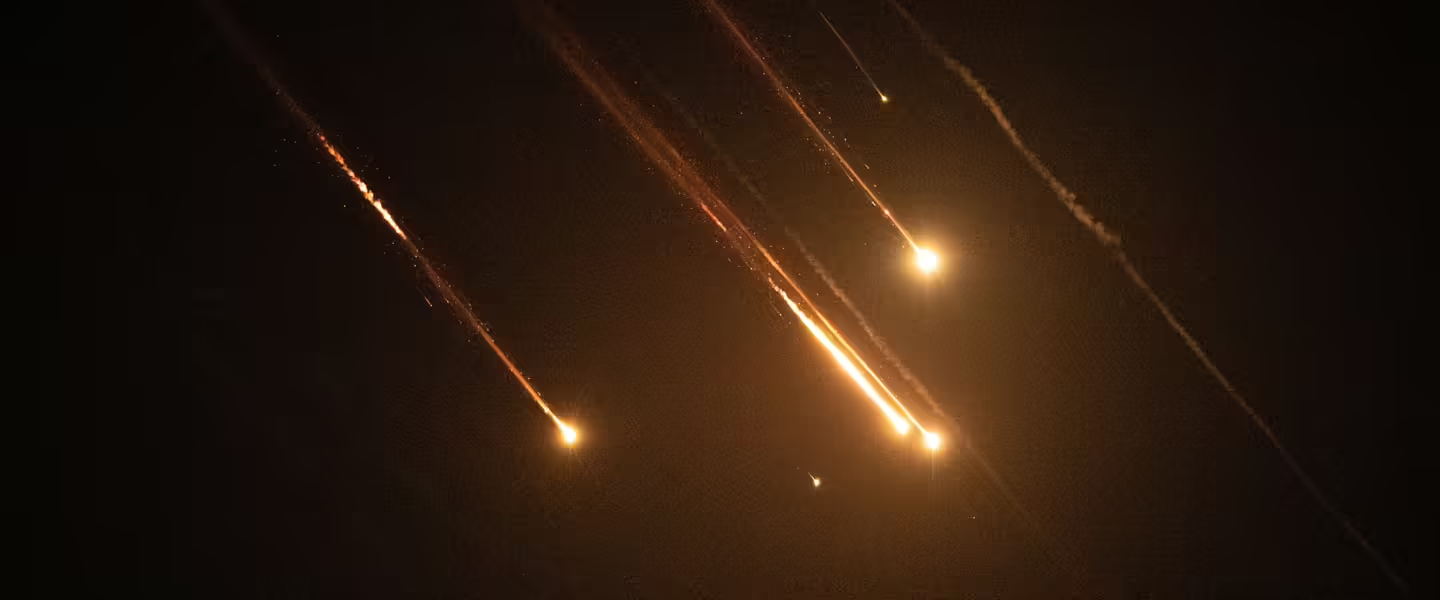How far do Iran and Netanyahu intend to go?
|
Listen To This Story
|
As late as last weekend, Israeli Prime Minister Benjamin Netanyahu appeared to be on a roll. After wounding more than 3,000 Hezbollah militants with exploding pagers and walkie-talkies and then killing Hezbollah’s long-time leader, Hassan Nasrallah, Netanyahu announced that no country in the Middle East was beyond the reach of an Israeli attack. Besides wounding Hezbollah militants, the booby-trapped pagers also wounded some civilians, children, and Iran’s ambassador to Lebanon, who required emergency surgery.
Iran’s reply was that Israel had crossed a “red line.” The question was, what did Iran plan to do about it?
By this morning, US intelligence agencies were warning Israel and everyone else that there were indications that Iran planned a ballistic missile attack against Israel within the next 12 hours. The already tense situation in the Middle East had turned into a high-stakes poker game with potentially seismic implications.
A few hours later Iran fired two successive waves totalling nearly 200 missiles at Israel.
The problem in this game of high-stakes poker is that everyone has something to lose. Elements of an Israeli IDF division — about 10,000 men — have crossed the border into southern Lebanon. Netanyahu says that the troops are only mopping up Hezbollah installations near the border so that some 60,000 northern Israeli residents can feel free from the threat of future rocket attacks.
From Hezbollah and Iran’s point of view, there is more than enough reason to think that Netanyahu could be lying and simply planning to move step-by-step toward Hezbollah’s eventual extinction. For its part, the Lebanese government has simply stepped back and decided to watch the two antagonists fight it out.
For Iran, one reason to proceed with caution is that no one knows how far Netanyahu is really prepared to go. If Iran goes too far, Netanyahu could use the threat as an excuse to take out Iran’s nuclear installations, something he has wanted to do for a long time.
Iran’s facilities are built deep underground, but the raid that killed Nasrallah demonstrated that Israel has enough conventional explosives to literally liquify the earth. It might be able to take out Iran’s nuclear labs, no matter how protected they are.
Another consideration from Iran’s perspective is that the domestic situation in Iran remains fragile. Supreme Leader Ali Khamenei is 85 and due to be replaced, but it is not clear by whom.
Hezbollah was pretty much the creation of Iran’s Revolutionary Guards, but the Revolutionary Guards are only one faction in Iran’s power structure, which, despite appearances, is not monolithic. The Iranians have to consider whether revenge against Israel is really worth inciting an attack against Iranian territory. The theocracy has to consider whether it would still have public support if an attack were to take place because it overreached.
Whether spurred by such considerations or independent of them, Netanyahu may think that it’s finally the moment to eliminate the Islamic threat once and for all, including blowing up Iran’s facilities focused on nuclear weapons.
In April, Iran launched 170 drones, 30 cruise missiles, and 120 ballistic missiles, most of which were intercepted by Israel’s “Iron Dome” anti-missile system and by US and British naval ships. The Iranian attack appeared to be ineffective, except that it was not exactly clear what Iran’s intentions were in launching the attack.
It had warned Israel and the US in advance that the attack would take place. The question is: Why? A standard practice in assessing the air defenses of an enemy is to fly directly at its borders and then turn around and pull back at the last minute. The exercise effectively illuminates the target’s radar systems and the location of its defenses. In short, the missile and drone attacks could have been intended to get Israel to reveal its vulnerabilities. Any anti-missile system, the Iron Dome included, can eventually be overwhelmed.
The real question following the Iranian missile attack is: How far does Netanyahu intend to take his current offensive? He could change course and agree to seriously discuss a ceasefire and deescalation, or he could push matters further.
If he were to do the latter, he might have to contend with more than Iran. Turkey’s president, Recep Erdoğan, has already voiced opposition to Netanyahu’s onslaught in Gaza and Lebanon. Turkey’s military has more than 355,000 troops. Iran, with a military that ranks 14th in the world, can call on more than 610,000 troops. Israel’s IDF has 169,500 active personnel. Until now, it has also been able to count on the United States but, with Netanyahu determined to chart his own course, and with the way his moves are roiling US domestic politics, it is no longer certain how long that will be the case.




